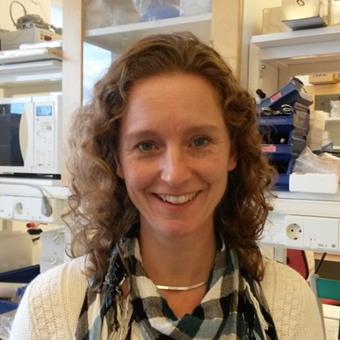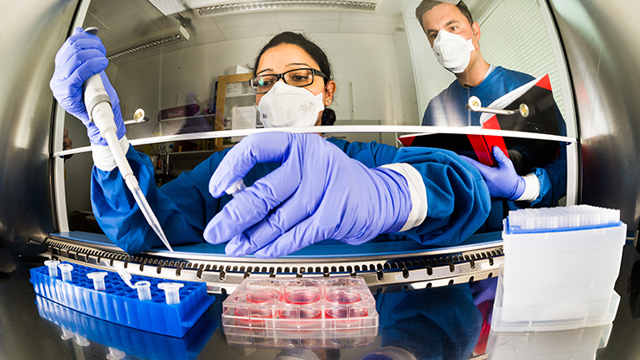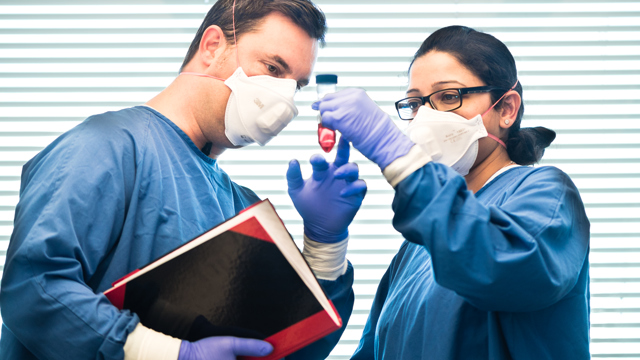Professor Maria Lerm is searching for new ways to stop tuberculosis. Photo credit David Einar“The tuberculosis bacterium is an extremely interesting microorganism. I’ve developed a love-hate relationship with it.”
Maria Lerm, newly installed professor at Linköping University, wants to find out whether it is possible to strengthen the body’s own protection against tuberculosis, which is the deadliest bacterial disease in the world.
“When antibiotics were discovered in the 1940s, everyone believed that research into tuberculosis was no longer necessary: the problem had been solved”, says Maria Lerm.
In the subsequent decades, tuberculosis, TB, didn’t receive much attention from the medical profession. The techniques used to reach a diagnosis, treat and prevent the disease were the same as those used in the 1950s. However, as the 20th century drew to a close, the pendulum started to swing back. HIV/AIDS was spreading, and a fatal tuberculosis infection was often seen in people whose immune systems had been weakened by HIV. Furthermore, strains of tuberculosis bacteria developed that were resistant to the standard antibiotics. An outbreak of multiresistant tuberculosis in New York in the early 1990s helped to open the eyes of the western world to the disease.
“Treatment resistance is a serious problem. Every third tuberculosis patient in Estonia, for example, has multiresistant tuberculosis. In this case, treatment lasting two years is needed, and the antibiotics used have much more serious undesired effects than the standard antibiotics. A course of treatment can cost nearly SEK 1 million.”
"We must think in new pathways"
Maria Lerm has seen that funds are becoming more readily available for research into tuberculosis. One huge challenge is to find better ways to prevent the spread of the disease. There is still only one vaccine available. The BCG vaccine came into use in the 1920s, and is essentially ineffective in preventing the spread of infection between adults.A child in Burundi is vaccinated against tuberculosis. But the vaccine is not efficient enough to prevent the spread of infection. Photo credit Thomas Schulze
“Some studies have been carried out that tried to improve the vaccine, but to no avail. I suspect that the mechanism of protection of the tuberculosis vaccine differs from that of classic vaccines, and may be completely different. Our research is directed towards a better understanding of the method of protection.”
Vaccination is based on the fact that once you have contracted a disease, such as measles, your immune system has learnt how to combat the infection so efficiently that you will not suffer from the disease again if you re-encounter it. Vaccination initiates the same protection system by giving the body an opportunity to “train” itself, using a small amount of the infectious agent. But Maria Lerm believes that we must think in new pathways when it comes to the immune system’s defence against tuberculosis.
“The problem is that if you have already had TB, you don’t become immune. You can contract the disease again, so not even this basic point agrees with how classic vaccines function.”
Another fact that Maria Lerm brings up is that only one of every ten people infected with tuberculosis will actually become ill.
“Why is this? We are extremely interested in the nine others who are infected and remain healthy. And it’s also the case that the disease is often limited to a single lung, even if the person has been coughing for years. The bacteria are present throughout the respiratory system, but have not been able to infect one of the lungs, which remains healthy. We have seen an epigenetic reprogramming of the immune system in our research, and we believe that the protection given by the existing vaccine is based on these epigenetic changes.”
“Epigenetic” changes describe the way in which genes are switched on or off in cells of the immune system. In contrast to mutations, which change a part of a gene permanently, epigenetic modifications of our DNA can be added and removed as required. In one ongoing project, Maria Lerm’s research group is studying not only tuberculosis patients but also people with whom they have been in contact, such as family, colleagues and close friends. The participants in the study cough up some mucus, and the researchers can isolate immune cells from the lungs from this, and investigate whether cells from different people have different abilities to kill tuberculosis bacteria.
“I hope that our work will lead to researchers, including those working in other research fields, realising that the immune system can react in several ways, not just in the classic vaccine-related mechanism. We believe that these epigenetic changes can take place in many diseases. It’s hugely exciting to be involved as a new pathway within a research field opens. In the long term, of course, it’s my dream to use the knowledge gained to prevent infection”, says Maria Lerm.
The article is published in LiU Magazine 2/2019.




